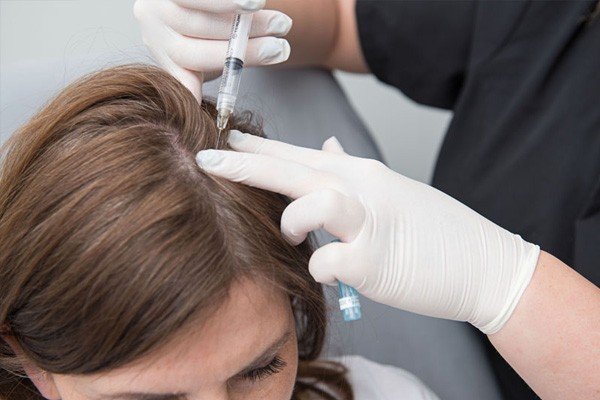Hair loss is a deeply personal concern for millions of people across the globe. Whether it begins with a receding hairline, noticeable thinning, or sudden shedding, the emotional toll of losing hair can be significant. Over the years, countless solutions have emerged—from over-the-counter topicals to surgical transplants. However, in recent times, one method has quietly risen to prominence as a safe, minimally invasive, and natural approach to restoring hair health: hair PRP treatment.
Understanding the Science Behind PRP
Platelet-Rich Plasma (PRP) therapy is not a new concept. It has been used in orthopedics, dentistry, and even sports medicine for its healing properties. The science behind PRP lies in the body’s own regenerative capabilities. Blood contains plasma, which is rich in growth factors that help repair tissue and stimulate cell growth.
In the context of hair restoration, PRP involves drawing a small amount of the patient’s blood, spinning it in a centrifuge to isolate the platelets, and then injecting that concentrated plasma into the scalp. The idea is simple yet powerful: by enhancing the activity around hair follicles, PRP can encourage dormant follicles to start growing hair again, while also strengthening existing ones.
Research suggests that PRP stimulates the dermal papilla cells—critical components of the hair follicle. These cells control hair growth and cycling. When exposed to the concentrated growth factors from PRP, they tend to grow more actively, leading to visible improvements in hair density and strength over time.
Why PRP Is Gaining Popularity
One of the main reasons PRP has become so widely accepted is its natural basis. Unlike synthetic drugs or chemical-based treatments, PRP utilizes the patient’s own biological material. This drastically reduces the risk of allergic reactions, infections, or serious side effects.
Another key advantage is the non-surgical nature of the procedure. There’s no incision, no stitches, and virtually no downtime. Many patients return to their normal routines within hours. Compared to hair transplants, which involve significant recovery time and cost, PRP offers a more accessible and less intimidating solution.
It’s also a flexible treatment. PRP can be used alone or alongside other therapies like microneedling, minoxidil, or laser treatments to boost effectiveness. Some individuals even opt for PRP after undergoing hair transplantation to enhance graft survival and speed up healing.
What to Expect During the Procedure
A standard PRP session begins with a simple blood draw, usually from the patient’s arm. The blood is then placed into a centrifuge, where it’s spun at high speeds to separate the platelets from the red and white cells. This process takes about 10–15 minutes.
Once the platelet-rich portion is ready, the scalp is cleansed, and a numbing cream may be applied to reduce discomfort. Then, using a fine needle, the PRP is injected directly into areas of the scalp that are thinning or showing signs of early balding.
The injections are spaced roughly a centimeter apart, covering the affected zones. The entire session typically lasts 30 to 45 minutes. Most patients report only mild discomfort, often describing it as a tingling or pressure sensation rather than pain.
There is no extended recovery period required. Some redness or mild swelling may appear, but this generally subsides within a day. Patients are usually advised to avoid washing their hair for 24 hours and to skip strenuous exercise for a day or two.
Results and Expectations
While PRP is not an overnight miracle, most patients start to notice visible changes within three to six months. Hair may begin to feel thicker, shed less frequently, and show improved texture. Continued sessions, typically spaced four to six weeks apart, are recommended to sustain results. A standard protocol involves three initial sessions, followed by maintenance treatments every four to six months.
It’s important to manage expectations. PRP is most effective in early-stage hair loss or thinning and may not offer dramatic results for completely bald areas. The goal is to improve density and prevent further shedding, not to regrow a full head of hair from scratch.
That said, clinical studies and anecdotal evidence both suggest that the majority of patients see noticeable improvements, especially when they commit to regular treatments and follow medical guidance.
Who Is a Good Candidate for PRP?
PRP works best for individuals experiencing mild to moderate hair thinning or early-stage hair loss. It’s especially beneficial for those with androgenetic alopecia (pattern hair loss), both in men and women. Since it uses the body’s own plasma, it's crucial for the patient to be in relatively good health, without significant blood disorders or chronic illnesses.
Candidates should also have realistic expectations. While PRP can significantly boost hair quality and reduce shedding, it may not completely reverse severe or long-standing baldness. Consulting with a qualified dermatologist or hair specialist is essential to determine eligibility.
Final Thoughts on PRP as a Hair Loss Solution
As the beauty and medical industries continue to evolve, natural and regenerative therapies like PRP are gaining ground. It offers a balance between efficacy, safety, and convenience, making it an attractive choice for individuals seeking a solution to hair thinning without undergoing invasive surgery or committing to long-term pharmaceuticals.
The future of hair restoration is likely to involve more integrative and personalized approaches, and PRP is a strong step in that direction. For those searching for a minimally invasive way to rejuvenate their hair and boost self-confidence, PRP could very well be the ideal path forward.

Comments on “Hair PRP Treatment: The Science, Benefits, and What to Expect from This Revolutionary Hair Loss Solution”